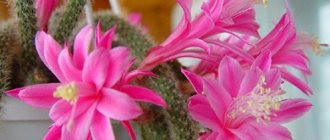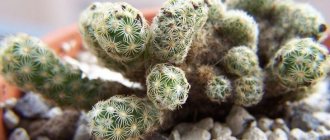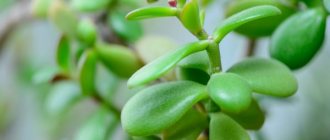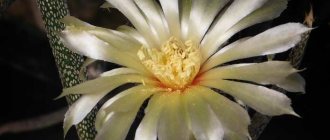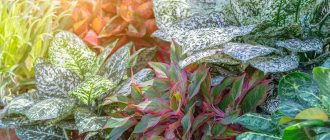The soil
A comfortable environment for cacti is loose, slightly acidic soil that allows air and water to pass through well. A mixture of coarse river sand, leaf humus and turf soil in equal proportions would be ideal. Stagnant water is not allowed for cacti. Therefore, it is important to make good drainage at the bottom of the pot, consisting of brick chips, expanded clay or gravel.
Common features
No matter how many types of home cacti there are, they have common features. The homeland of the vast majority of these plants is America; they are also found in Africa and the islands of the Caribbean. Some varieties can be found on the coasts of the Black and Mediterranean Seas.
Almost all varieties of cactus are unpretentious; rather harsh conditions are ideal for them:
- the minimum amount of water characteristic of deserts (although some species growing in the tropics need moist areas of soil);
- sudden temperature changes characteristic of deserts (the difference between the warmth of the day and the cold of night in some areas reaches 50 degrees);
- low amount of humus in the soil (partly compensated by the high mineral content).
This growing environment explains the unusual structure of all representatives of the cactus family. The fleshy stem and dense skin allow the plant to retain water in conditions of lack of moisture, and the following features help it survive:
- prickly needles that protect against animals, instead of the usual leaves of most flowers;
- hairs that create a slight shadow under the scorching sun;
- a waxy component on the surface of the stem that prevents the evaporation of water from the plant;
- the ribbing of the stem, in the grooves of which even small drops of dew collect;
- long roots that find moisture underground.
Thus, cacti do not need large volumes of water just because, thanks to their unusual structure, they themselves are saturated with moisture.
Landing
Before transplanting the cactus into another pot, you need to stop watering for a few days - this will make it much easier to remove the root from the ground. After the drainage layer, 1/3 of the soil mixture is poured into the new container. Next, carefully immerse the roots in it and sprinkle with the remaining soil. The root collar is sprinkled with river sand.
In order for the wounds of the root system to heal after transplantation, the soil is not moistened for several days. It is enough to replant an indoor cactus only once every couple of years.
Rainbow Hedgehog Cactus
This species is cylindrical or oval in shape, up to 45 cm tall. It is impressive with its color range - pink and purple shades.
This cactus is quite comfortable without shading from the bright sun, on the south and west side. Echinocactus favorably tolerates dry air, but also does not mind periodic spraying with sufficiently warm water.
This breed has an extremely fragile root system, so the inevitable replanting must be extremely careful.
Reproduction
If you suddenly want to propagate Opuntia, you can do this in two ways:
- Seeds;
- By cuttings.
Seeds
This method is not very popular, because it is quite problematic. Not all seeds germinate, and it even happens that none at all. We have previously written about how to grow cacti from seeds, so the principle here is exactly the same, but there is one difference. Opuntia seeds have a rather dense shell, so they should first be rubbed with a file or sandpaper, and then soaked in potassium permanganate.
And then everything is as usual. Soil is poured into the greenhouse, holes are made there and seeds are planted. After this, you need to wait for shoots. The first transplant is performed after 3 months. More details are written in our separate article.
Cuttings
The most preferred method, which is much more effective than the previous one. There is nothing complicated about cuttings. First of all, take a well-sharpened knife and select any healthy shoot on the stem. Then, it should be cut off and then placed in an upright position in a place where it can dry a little. Usually it takes 3-4 days until a film appears at the cut site.
Also read: Cactus - Euphorbia Euphorbia: 5 popular domestic species + care
Next, the dried cuttings should be planted in a container with wet sand, to a depth of 5-6 cm. The container itself must be covered with cling film and allowed to be ventilated periodically, as well as occasionally watered. As soon as the seedling has roots, it should be transplanted. How to do this can be read above.
Opuntia microdasys (Prickly pear)
It is highly undesirable to touch any type of prickly pear. Its miniature spines with jagged ends prick very painfully. Prickly pears grow up to 30 cm and come in a variety of shapes.
In summer, the cactus is watered abundantly, but during periods of extreme heat, watering is reduced and done only in the evening. In this case, moisture should not get on the stems.
Ferocactus
Ferocactus is part of the large Cactus family. Its natural habitat is quite extensive - from North America, Mexico to South and South-West America. There are a lot of species of Ferocactus, we will note just a few that are the most convenient for breeding, even for beginners: Acanthus, Coloratus, Broad-needle, Ford, Imeri, Porcupine, Powerful.
The plant loves the sun both in summer and winter. Therefore, if there is a place for the cactus on the north window, then it will need lighting on winter evenings.
Also read: Hare's Ear Cactus - Prickly Pear
If the soil is selected correctly, then in spring and summer you need to water as soon as the soil substrate is completely dry; during the dormant period, watering is reduced even more. Water with soft water: rain or melt water, warmed to room temperature. You can use filtered water.
Trichocereus candicans
Can grow up to 1.5 meters. It features white, funnel-shaped, fragrant flowers.
Depending on the species, the stem can grow vertically or obliquely. The length of the spines on the ribs reaches 4 cm, in the center - 2 times longer.
The plant is very hardy and unpretentious, gaining height and expanding easily with plenty of sunlight, warmth and regular watering.
Strauss Cleistocactus
Belongs to the Cactus family, there are 50 species. Its homeland is South America and Uruguay. The most common three species in indoor floriculture: Strauss's Cleistocactus, Winter's Cleistocactus, and Emerald-flowered. All types are flowering and very decorative.
Also read: Hypocyrta: an ornamental plant with bright flowers - “fish”
He loves light very much and needs it throughout the year. It is better to place the cactus on a south window. In summer you can place it in direct sunlight in fresh air. Each species has distinctive flowers.
Watering should be done every time the soil substrate is completely dry. The substrate should be made moisture-permeable and loose. In summer, when the temperature ranges from 22 to 28 degrees, water more often, and in winter, the temperature is reduced to 15 degrees, and watering is reduced, carefully monitoring the condition of the soil.
Holiday Cactus (Christmas or Schlumberger)
The plant impresses and pleases with its beautiful flowering in winter, which is unusual for cacti.
Therefore, it is in winter that Schlumberger will need intensive watering. For such a cactus, diffused sunlight is more acceptable. The palette of shades of flowers 7-8 cm long can be very different.
Mammillaria (Mammillaria)
This plant has up to 500 varieties. Mammillaria are covered with long soft spines, like hairs. The stems come in spherical or cylindrical shapes.
Their characteristic difference from other representatives is the presence of many papillae. Flowers of purple, white, and red tones grow from the axils located between the papillae.
Notocactus ottonis (Notocactus Otto)
Flower growers grow this species not so much for the sake of flowering, but for the interesting structure of the stem with pronounced ribs, on which hard spines look very nice.
Over time, large glossy yellow flowers appear, the diameter of which reaches 8 cm. The result is an expressive contrast against the bright green background of the stem, which adds even more attractiveness to this breed.
Rebutia miniscula (Tiny rebutia)
These cute little cacti are spherical in shape with a diameter of no more than 10 cm. Tiny Rebutia differs from other similar species in the placement of flowers - not at the top of the stem, but at its very base.
Flowers, as a rule, have a pink, orange, red tint, and even the golden color of the spines of the rebutia makes it especially decorative.
This cactus is very favorable to dry air, but requires mandatory spraying in the morning from a spray bottle. Basically, the plant requires the same conditions as other indoor cacti.
Do you have cacti at home? What types are your favorite?
Main varieties and their names
All cacti can be divided into groups:
- Indoor;
- Forest;
- Desert.
Indoor
Indoor cacti are those that adapt to home growing conditions.
Indoors can be classified as:
- Astrophytum;
- Cereus;
- Echinocereus;
- Mammillaria;
- Notocactus otto;
- Spurge;
- Small-haired prickly pear;
- Rebutia.
Cereus
Echinocereus
Astrophytum
Mammillaria
Small haired prickly pear
Spurge
Notocactus otto
Rebutia
These species get along well indoors and bloom with proper care. Some may bloom in the first year of life , for example, some Mammillaria.
One of the most popular cacti that is grown at home is Euphorbia. This is an ornamental crop that is distinguished not only by its original appearance, but also by the poisonous milky juice contained inside the stems and leaves.
Forest
The most popular representatives of forest crops include:
- Epiphyllum;
- Decembrist;
- Rhipsalidopsis.
Decembrist
Epiphyllum Ripsalidopsis
Decembrist and ripsadolipsis are similar in appearance . However, the petals of ripsalidopsis grow straight, without bending back. Coloring – red.
Epiphyllum does not have a very neat shape . The species epiphyllum is notable for its flowers in red shades. However, many varieties have been developed with a variety of colors.
Decembrist is distinguished by its flowering in winter . This is a very common variety. It blooms with white, pink, purple and red flowers.
Also included in forest:
- Discocactus . It has a round stem shape and blooms with a single white flower;
- Opuntia . Notable not only for its orange flowers, but also for its edible fruits. Some of them have a pleasant taste and beneficial properties;
- Pereskia;
- Melocactus.
Pereskia
Prickly pear
Discocactus
Melocactus
Desert
The desert spiny species include::
- Cereus;
- Mammillaria;
- Eriosice;
- Echinocacti;
- Echinocereus;
- Rebutions.
Echinocactus Eriosice
Mammillaria Cactus Rebutia
Echinocereus Cereus
Most representatives bloom with beautiful flowers indoors . Some of them have the ability to bloom in the first year of life.
